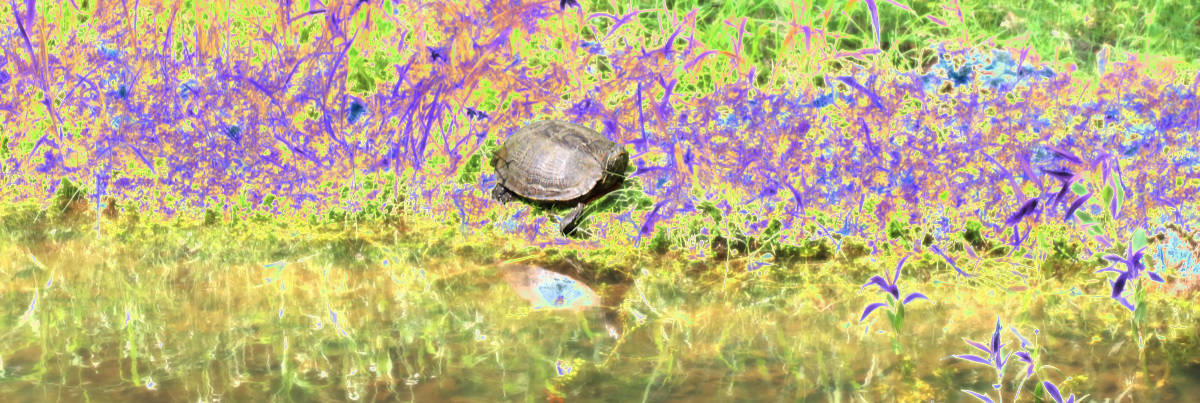This edition of NN focuses on the best arc of the so-called circle of life: the newly-born and soon-to-be-born (assuming all goes well) non-humans of our immediate vicinity. April and May are when does drop delightful doubles, caterpillars contemplate cocoons, birds beget birds, and turtles tryst.
Please accept my sincere apologies for the preceding sentence; I suffer from Awful Alliteration Ailment.
Well, rats.
Let’s take a look at some of these individual examples, shall we?
Turtles
It was inevitable that the beautiful vacant lot between us and the golf course would succumb to development, but we had almost eight years of enjoyment of the unspoiled view, as did a lot of wildlife. Armadillo families made homes there; groups of whitetail deer browsed (and slept) there regularly; foxes, raccoons, opossums, and skunks followed a predictable path through the underbrush every night; and turtles made their way up the steep bank from the creek to dig nests and deposit eggs.
Some of that activity will continue, albeit at a reduced frequency, but the turtles haven’t appeared to figure out that their nesting grounds are no longer unspoiled.

I suspect that this large mud turtle has been laying eggs in the lot every spring for years, and wasn’t going to let a little construction disrupt her reproductive routine.

I’ve written about this phenomenon multiple times in the past — here’s one of the more thorough descriptions — so you might already know the drill: the female releases enough water to soften the ground and make digging with her hind feet easy, and she deposits up to a dozen eggs in the hole that she creates. She then covers up the hole, and heads back to the creek, never again to visit the nest. If all goes well, they’ll hatch in three-to-four months and the youngsters will dig their way out of the nest and head for the nearest water.
If you followed the preceding link, you know that often all does not go well. I was curious to see if predators would discover and raid the new nest when it was at its most accessible, so I set up a trail camera on a tripod and focused it on the area of the nest. I let it run through the night, and downloaded the resulting photos the next morning.
Unsurprisingly, the camera captured some visitors through the night: a few deer passing through, as well as a couple of raccoons. Surprisingly, though, the raccoons seemed to pay no attention to the nest.
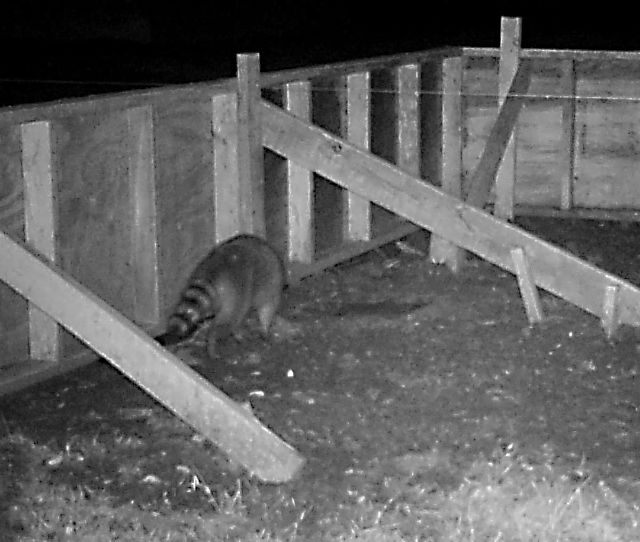
The videos show the raccoons walking past the nest and not even stopping to investigate it. Perhaps they’re finding plenty to eat without having to go to the trouble to excavate a turtle’s nest.
It’s now been a couple of nights and the nest is still intact, so that’s the good news. The bad news is that there’s almost no chance it’s going to survive the construction that will continue for the next eight or nine months.
Birds
A Carolina wren (Thryothorus ludovicianus) has built a nest in a hose bib cover on our back porch. The nest now contains at least two hatchlings, and the adults are diligent in their efforts to bring the babies sustenance.
Warning: Extreme rabbit trail ahead. Seven sub-species of the Carolina wren comprise the genus Thryothorus, which itself is a member of the wren family Troglodytidae. You’ll no doubt recognize the reference in the family name to troglodytes, derived from the Greek work for cave-dwellers. The scientific family name was applied due to the tendency of certain wren species to forage in dark crevices (according to the afore-linked Wikipedia entry). Of course, today the term troglodyte has taken on a perjorative connotation, describing someone who is boorish, ill-mannered, contemptuous of societal norms, etc. That brings us full-circle back to the Carolina wren, whose tendency to be a loud-mouthed chirper in the early hours of the morning can disrupt one’s important slumber. Or so I’ve heard.
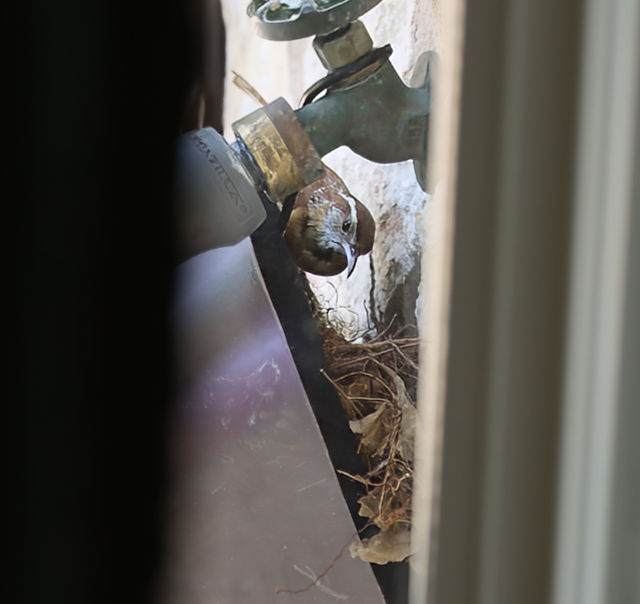
The hose bib is just outside a narrow window in our living room, and we have an even narrower view of the location due to the placement of a very tall cactus. Because the styrofoam cover faces the stone facade of our house, we can’t see the hatchlings, but we can watch the adults alight and feed them.
I mounted my DSLR on a tripod about six feet from the window, and zoomed in on the scene with a 200mm lens, focused manually. I attached a wired remote shutter release to the camera, and waited for the adults to appear, which they did about every ten minutes or so.
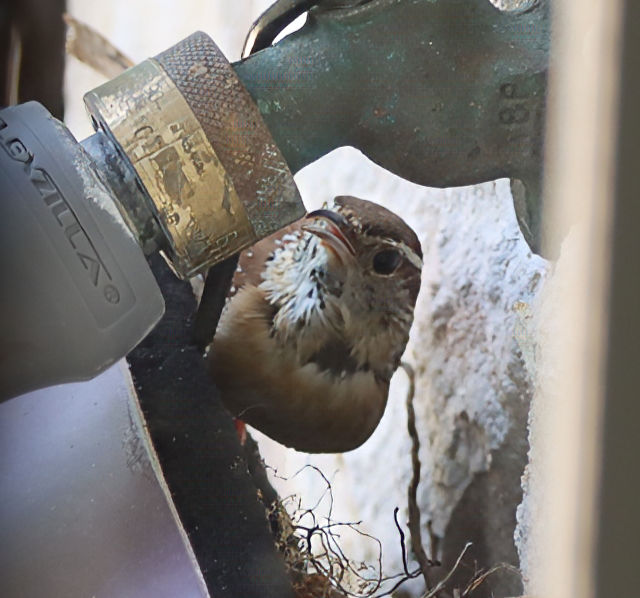
At first, I couldn’t make out what they were bringing to the babies. But I was able to freeze the motion enough to see that the adults were arriving with caterpillars in their beaks, which they then dropped into the open mouths of the hatchlings.
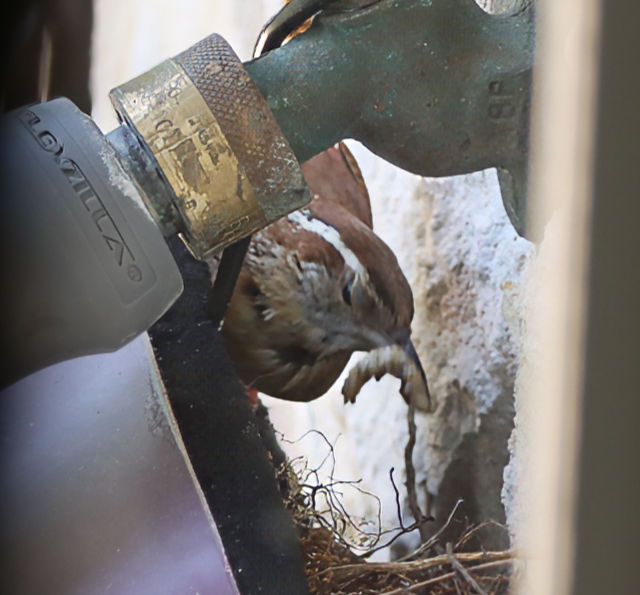
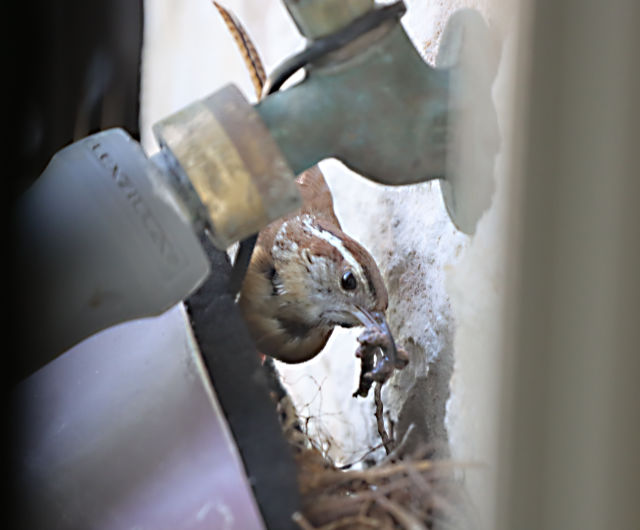

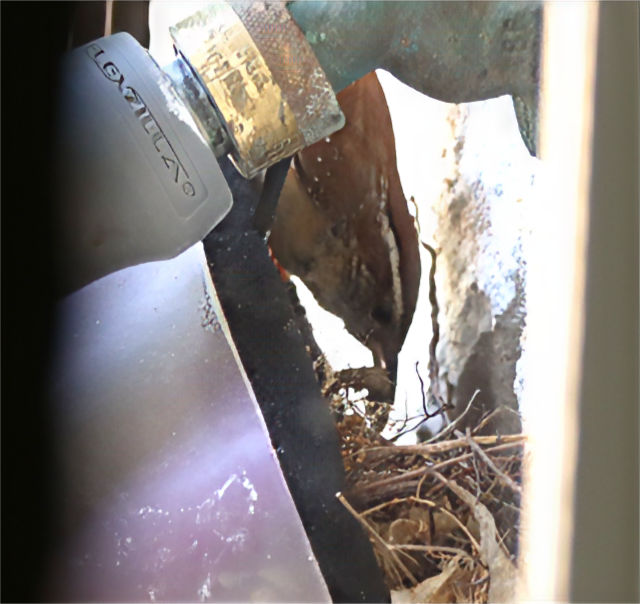
While this location is fairly ideal for protection from predators, it’s pretty inconvenient for us as we attempt to avoid disturbing the nest. That faucet is the main source for Debbie’s hand watering, and thanks to a leaky backflow preventer (that’s the brass-colored device in the photos), water is likely to run into the nest when we use it. At this point, I’m not sure what we’re going to do, although if we continue to get some good rainfall, it might not be a big deal.
Caterpillars
The seemingly ubiquitous salt marsh caterpillars I wrote about a few days ago aren’t the only pupa game in town. While we were out watching the egg-laying mud turtle, Debbie spotted the following green guy in the grass:
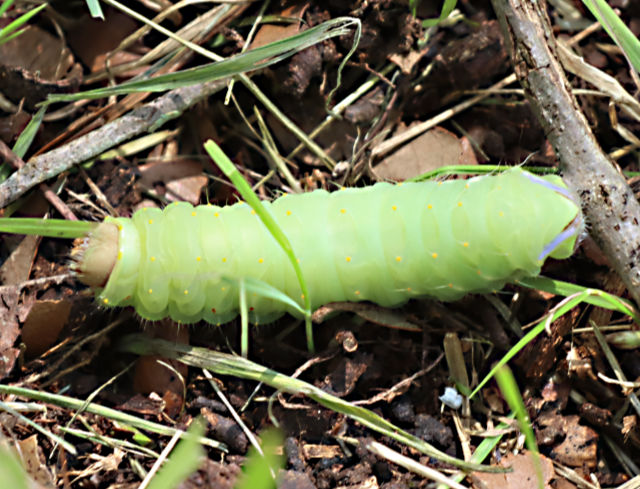
This is the caterpillar stage of the Polyphemus moth (Antheraea polyphemus), a large and beautiful moth whose species name comes from the name of the cyclops who, in Greek mythology, was blinded by Odysseus, as described in Homer’s Odyssey. It’s an odd choice for a name of a moth whose primary identifying characteristics are the two “eyespots” on its hindwings.
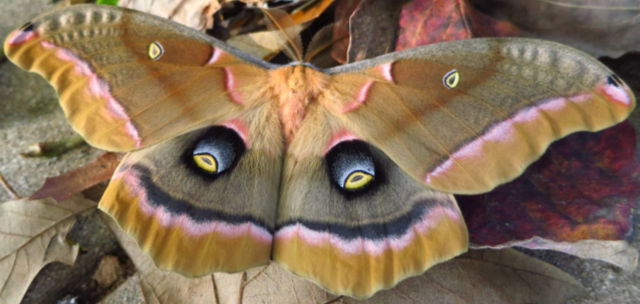
These caterpillars feed on a wide variety of trees, only two of which are in our yard (oak and elm). They can eat a lot, but they’re fairly rare and not a threat in this area. But, man, are they ugly:
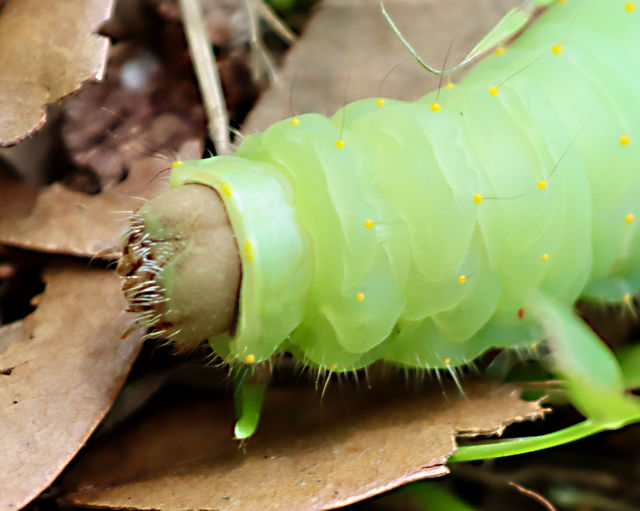
Coming Soon: A fish we would like to see sleeping with the fishes, if you know what I mean, and I think you do.
Discover more from The Fire Ant Gazette
Subscribe to get the latest posts sent to your email.

